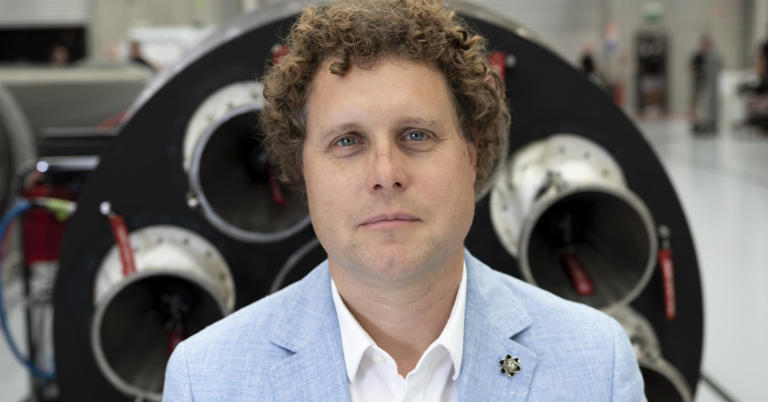Story by Thomas MacDonald • Yesterday
MTL Blog
Premier François Legault reignited the debate about his party's conception of secularism in Quebec on Easter Monday with a tweet celebrating the perceived Catholic origins of the province's "culture of solidarity."

Legault Implied Quebec Identity Has Catholic Roots & Justified It By Calling It 'Heritage'© Provided by MTL Blog
"Catholicism has also given us a culture of solidarity that distinguishes us on a continental scale," the tweet from the premier reads. That line actually comes from an April 7 Journal de Montréal opinion piece by sociologist and columnist Mathieu Bock-Côté, which Legault shared in his Twitter post.
Bock-Côté also argues that Catholicism "served as a basis for [Quebec] collective identity" following the British conquest and that this "sense of the collective leads us today to resist the fragmentation of society under the pressure of multiculturalism."
Legault's tweet amassed hundreds of comments by Monday afternoon, some from Twitter users praising the statement, but many more from critics who accused the premier of hypocrisy given his insistence on the secularism of the Quebec state.
Legault's government notably passed the controversial Bill 21, which bans many public servants from wearing religious symbols while performing their duties. Many have said the measure unfairly targets religious minorities, especially Muslim women.
The premier later returned to Twitter to defend the tweet, writing in response that "we must distinguish between secularism and our heritage."
Story by Katelyn Thomas, Montreal Gazette • Yesterday
Quebec Premier François Legault holds a news conference in Montreal on Friday March 24, 2023.© Provided by The Gazette
Twitter users were quick to accuse Premier François Legault of hypocrisy on Easter Monday for tweeting a line from a Journal de Montréal column crediting Catholicism for “(engendering) in us a culture of solidarity that distinguishes us on a continental scale.”
Legault was quoting from a Mathieu Bock-Côté column titled “ Praise of our old Catholic background
The premier’s post drew criticism from those on both sides of the secularism debate given Quebec’s controversial Bill 21 , which bans most government employees from wearing religious symbols at work. Those who take issue with Bill 21 have pointed out the law disproportionately affects Muslim women, raising concerns about whether the ban is meant to target specific religions.
“See, they would’ve had some plausible deniability on the religious headwear ban if he didn’t tweet this out,” one Twitter user wrote in response to Legault’s tweet.
The controversial tweet came less than a week after Quebec announced plans to ban prayer rooms in schools . Education Minister Bernard Drainville said on Wednesday he would issue the directive to all school service centres, adding that prayer rooms in schools are not compatible with official secularism. He added students who want to pray could do
By 12:30 p.m., Legault’s tweet had more than 335,000 views, 550 responses and 300 retweets, including 250 quote-tweets. The attention had prompted him to respond to his original post with: “We must distinguish between secularism and our heritage.”
In addition to citizens, several politicians had weighed in on his post. Marwah Rizqy, Liberal MNA for Saint-Laurent and spokesperson for education, had responded saying “we all write tweets we regret.”
“You have a duty of reserve and neutrality as premier of all Quebecers in our secular state,” Rizqy wrote.
Monsef Derraji, Liberal MNA for Nelligan, for his part wrote: “A premier who supposedly advocates the secularism of the state. What a lack of judgment!”
This is not the first time Legault has received criticism for a statement about Catholicism. He came under fire during a visit to California in 2019 after claiming offhand that "all French Canadians" are Catholic.
The controversial tweet came less than a week after Quebec announced plans to ban prayer rooms in schools . Education Minister Bernard Drainville said on Wednesday he would issue the directive to all school service centres, adding that prayer rooms in schools are not compatible with official secularism. He added students who want to pray could do so, but “discreetly” and “silently” without designated rooms.
By 12:30 p.m., Legault’s tweet had more than 335,000 views, 550 responses and 300 retweets, including 250 quote-tweets. The attention had prompted him to respond to his original post with: “We must distinguish between secularism and our heritage.”
In addition to citizens, several politicians had weighed in on his post. Marwah Rizqy, Liberal MNA for Saint-Laurent and spokesperson for education, had responded saying “we all write tweets we regret.”
“You have a duty of reserve and neutrality as premier of all Quebecers in our secular state,” Rizqy wrote.
Monsef Derraji, Liberal MNA for Nelligan, for his part wrote: “A premier who supposedly advocates the secularism of the state. What a lack of judgment!”
Former Liberal MNA Christine St-Pierre also weighed in, drawing attention to gender inequality within Catholicism.
Quebec comedian Sugar Sammy also commented.
“Secularism is important except once on Twitter,” he wrote.



















